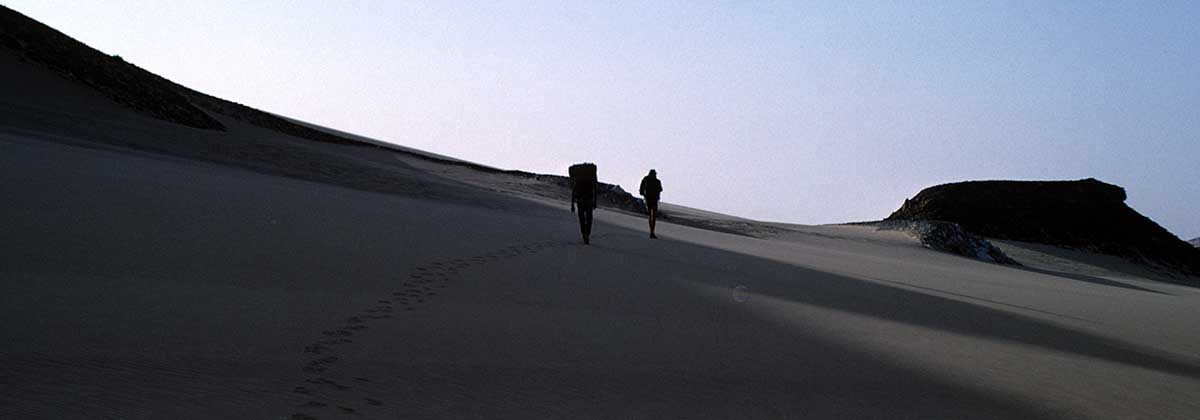Aircraft Carriers, Fighter Pilots and the “Danger Zone”
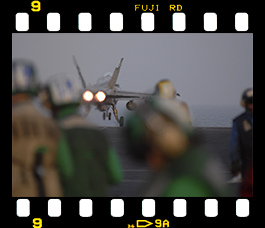 I recently watched the latest Tom Cruise film, “Top Gun: Maverik.” Like its iconic 35-year-old predecessor, “Top Gun,” the movie was action-packed, with a plethora of high and low flying daredevil maneuvers. Those scenes may have invoked various reactions among the audience, but to me they triggered decades-old memories of the times I spent on aircraft carriers as a photojournalist. This story recounts the four assignments I had on the four aircraft carriers from 2000 to 2007. The carriers were: USS George Washington, USS Constellation, USS Ronald Reagan and USS Dwight D. Eisenhower.
I recently watched the latest Tom Cruise film, “Top Gun: Maverik.” Like its iconic 35-year-old predecessor, “Top Gun,” the movie was action-packed, with a plethora of high and low flying daredevil maneuvers. Those scenes may have invoked various reactions among the audience, but to me they triggered decades-old memories of the times I spent on aircraft carriers as a photojournalist. This story recounts the four assignments I had on the four aircraft carriers from 2000 to 2007. The carriers were: USS George Washington, USS Constellation, USS Ronald Reagan and USS Dwight D. Eisenhower.
Remembering My Encounters with Jimmy Carter
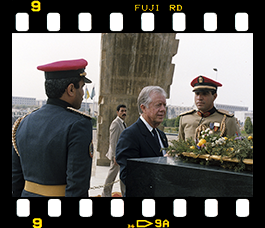 Jimmy Carter, the oldest living US president in history, is indirectly responsible for launching my journalistic career. I photographed Carter on two separate occasions in Egypt. The first time was in 1979 when I was a student traveler and novice photographer. Pursuing the president through the streets of Cairo to take a picture of his historical visit to Egypt gave me an incentive to choose journalism as a profession. The second encounter came nearly a decade later when the photo I took of Carter was widely published, confirming that I had made the right career choice.
Jimmy Carter, the oldest living US president in history, is indirectly responsible for launching my journalistic career. I photographed Carter on two separate occasions in Egypt. The first time was in 1979 when I was a student traveler and novice photographer. Pursuing the president through the streets of Cairo to take a picture of his historical visit to Egypt gave me an incentive to choose journalism as a profession. The second encounter came nearly a decade later when the photo I took of Carter was widely published, confirming that I had made the right career choice.
Somalia 1992: Civil War, Famine and Death of a Nation
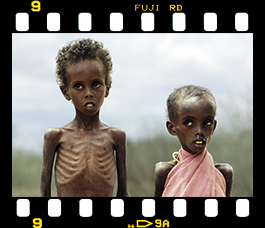 Thirty years ago, I boarded a Canadian military transport plane from Nairobi, Kenya to the southern Somali town of Bardera. The Canadians had recently joined the United States, France, Germany, and Belgium who were leading an international campaign to airlift much needed emergency food and relief supplies into the country which was reeling under the effect of a civil war coupled with a drought. By the time we arrived in Bardera, in September 1992, starving Somalis were migrating en masse from the rural areas to towns like Bardera, Kismayo, and Mogadishu where food distribution centers had been set up by the World Food Program (WFP) and the International Committee of the Red Cross (ICRC). According to the United Nations (UN), which was at the head of this campaign, hundreds of thousands of Somalis had already died since the war started and another two million, out of a population of seven million, were on the brink of starvation.
Thirty years ago, I boarded a Canadian military transport plane from Nairobi, Kenya to the southern Somali town of Bardera. The Canadians had recently joined the United States, France, Germany, and Belgium who were leading an international campaign to airlift much needed emergency food and relief supplies into the country which was reeling under the effect of a civil war coupled with a drought. By the time we arrived in Bardera, in September 1992, starving Somalis were migrating en masse from the rural areas to towns like Bardera, Kismayo, and Mogadishu where food distribution centers had been set up by the World Food Program (WFP) and the International Committee of the Red Cross (ICRC). According to the United Nations (UN), which was at the head of this campaign, hundreds of thousands of Somalis had already died since the war started and another two million, out of a population of seven million, were on the brink of starvation.
Discovering Ethiopia and Sudan: Winter Break 1982
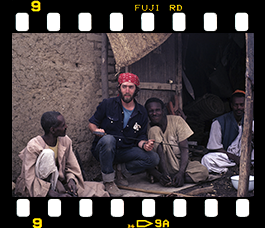 When I attended the American University in Cairo (AUC) in the early 1980s, it was customary for study abroad students to take a trip during the winter break seeking adventure and new experiences. My friend Pam and I wanted to go somewhere “exotic,” so we asked our African studies professor Dr. Gail Gerhard for suggestions. “If you want to visit an exotic place on the Arabian Peninsula, go to Yemen, otherwise in Africa go to Ethiopia.” Since we were studying in an Arab country, we decided to experience something different, so we chose Addis Ababa. Our sojourn to Ethiopia didn’t go as planned because of fighting in the countryside so we continued on to Sudan for what ended up being a wonderful experience.
When I attended the American University in Cairo (AUC) in the early 1980s, it was customary for study abroad students to take a trip during the winter break seeking adventure and new experiences. My friend Pam and I wanted to go somewhere “exotic,” so we asked our African studies professor Dr. Gail Gerhard for suggestions. “If you want to visit an exotic place on the Arabian Peninsula, go to Yemen, otherwise in Africa go to Ethiopia.” Since we were studying in an Arab country, we decided to experience something different, so we chose Addis Ababa. Our sojourn to Ethiopia didn’t go as planned because of fighting in the countryside so we continued on to Sudan for what ended up being a wonderful experience.
“Divine Victory” Israel-Hezbollah Victory
 On the morning of July 12, I got a call from Zina Hemady who was working at Naharnet, an online English news service associated with an Nahar newspaper, to say that there had been a cross-border incident involving Hezbollah where several Israeli soldiers had been killed. At first, I didn’t think much of it as the two sides had had a long history of confrontations and the Israeli response had normally been limited to bombing Hezbollah-controlled areas in South Lebanon. As news began to filter in, it turned out that three Israeli soldiers had been killed, two others wounded, and another two had been captured. To make matters worse, shortly after the incursion another four Israelis died when their tank hit a land mine while mounting a rescue operation inside Lebanon.
On the morning of July 12, I got a call from Zina Hemady who was working at Naharnet, an online English news service associated with an Nahar newspaper, to say that there had been a cross-border incident involving Hezbollah where several Israeli soldiers had been killed. At first, I didn’t think much of it as the two sides had had a long history of confrontations and the Israeli response had normally been limited to bombing Hezbollah-controlled areas in South Lebanon. As news began to filter in, it turned out that three Israeli soldiers had been killed, two others wounded, and another two had been captured. To make matters worse, shortly after the incursion another four Israelis died when their tank hit a land mine while mounting a rescue operation inside Lebanon.
Ethiopia During the Collapse of Communism
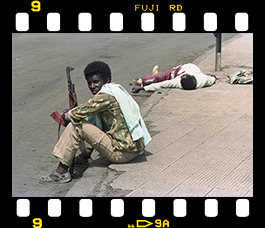 Following the 1990 collapse of the Soviet Union, repercussions were felt across the world, but especially in Africa. Allies of the communist block were caught off guard when the Iron Curtin crumbled, and they suddenly found themselves deprived of the economic, financial, and military assistance that had helped many of the continent’s despotic regime stay afloat for decades. One of the countries hit hardest was Ethiopia which had been ruled by Haile Meriam Mengistu’s Marxist government for nearly two decades. It’s been 30 years since Mengistu was deposed and the following story with photographs looks at my journey from Baghdad to Addis Ababa to cover the conflict.
Following the 1990 collapse of the Soviet Union, repercussions were felt across the world, but especially in Africa. Allies of the communist block were caught off guard when the Iron Curtin crumbled, and they suddenly found themselves deprived of the economic, financial, and military assistance that had helped many of the continent’s despotic regime stay afloat for decades. One of the countries hit hardest was Ethiopia which had been ruled by Haile Meriam Mengistu’s Marxist government for nearly two decades. It’s been 30 years since Mengistu was deposed and the following story with photographs looks at my journey from Baghdad to Addis Ababa to cover the conflict.
Egypt Beyond the Nile: My Unpublished book (Part 1)
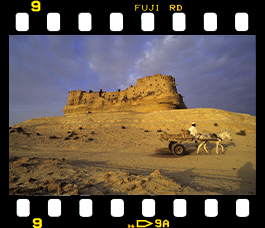 In the mid 1990s I was commissioned by a publisher to illustrate a book about the splendor of Egypt. After realizing that so much had already been done about the Nile Valley, which makes up a mere eight percent of the country, I decided to explore the other 98 percent that consists desert with a scattering of oases. My nine month journey first took me to Roman settlements near the Fayoum oasis a few hours drive from Cairo. On my second journey I drove to the remote Siwa oasis, near the border with Libya to attend a religious multi, or festival that happens once a year during the first full moon in October. Afterwards I drove to the oasis of Qara on the edge of the Qattar depression, which had recently been opened up for foreigners to visit.
In the mid 1990s I was commissioned by a publisher to illustrate a book about the splendor of Egypt. After realizing that so much had already been done about the Nile Valley, which makes up a mere eight percent of the country, I decided to explore the other 98 percent that consists desert with a scattering of oases. My nine month journey first took me to Roman settlements near the Fayoum oasis a few hours drive from Cairo. On my second journey I drove to the remote Siwa oasis, near the border with Libya to attend a religious multi, or festival that happens once a year during the first full moon in October. Afterwards I drove to the oasis of Qara on the edge of the Qattar depression, which had recently been opened up for foreigners to visit.
Egypt Beyond the Nile: The Roman Forts of the Kharga Depression (Part 2)
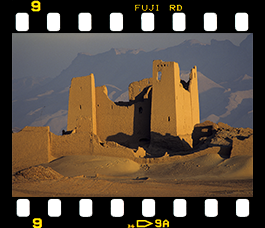 After successfully documenting the rarely visited oases of Siwa and Qara in Egypt’s Western Desert for my book, Egypt Beyond the Nile, my next mission was to find the Roman forts near the oasis town of Kharga. I had attempted this journey a decade earlier, but it had failed miserably as traveling on foot in the late spring desert heat proved to be an impossible and dangerous feat. I decided to attempt this adventure for the second time in the autumn of 1994, but for this trip time I had to make sure that I had made all the necessary preparations.
After successfully documenting the rarely visited oases of Siwa and Qara in Egypt’s Western Desert for my book, Egypt Beyond the Nile, my next mission was to find the Roman forts near the oasis town of Kharga. I had attempted this journey a decade earlier, but it had failed miserably as traveling on foot in the late spring desert heat proved to be an impossible and dangerous feat. I decided to attempt this adventure for the second time in the autumn of 1994, but for this trip time I had to make sure that I had made all the necessary preparations.
Remembering Volkhard Windfuhr: The Dean of Middle East Journalists
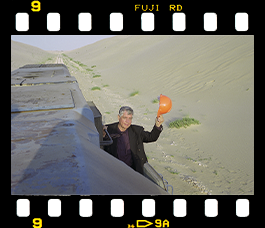 The dean of journalists in the Middle East, Volkhard Windfuhr, passed away on 19 October 2020 at the age of 83 in Cairo, Egypt. For 37 years he was the Middle East Correspondent for Der Spiegel Magazine and for over a decade he was head of the Cairo Foreign Press Association (FBA). Throughout the 1990s and 2000s, I had the privilege of working with Volkhard as Der Spiegel’s photographer in the region. Together, we traveled throughout the Middle East and far beyond interviewing presidents and kings and covering the conflicts that have wreaked havoc on the region for decades. Our assignments took us as far as Tblisi, Georgia, in the caucuses, where we interviewed President Eduard Shevardnadze as well as to the Eritrea-Ethiopia border war, one of East Africa’s most contested battlefronts.
The dean of journalists in the Middle East, Volkhard Windfuhr, passed away on 19 October 2020 at the age of 83 in Cairo, Egypt. For 37 years he was the Middle East Correspondent for Der Spiegel Magazine and for over a decade he was head of the Cairo Foreign Press Association (FBA). Throughout the 1990s and 2000s, I had the privilege of working with Volkhard as Der Spiegel’s photographer in the region. Together, we traveled throughout the Middle East and far beyond interviewing presidents and kings and covering the conflicts that have wreaked havoc on the region for decades. Our assignments took us as far as Tblisi, Georgia, in the caucuses, where we interviewed President Eduard Shevardnadze as well as to the Eritrea-Ethiopia border war, one of East Africa’s most contested battlefronts.
Gulf War Snapshots 1990 – 1991
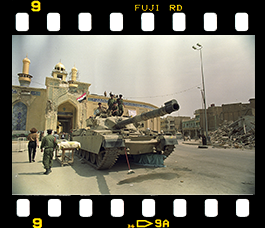 The beginning of August marks the 30-year anniversary of Saddam Hussein’s invasion of Kuwait. My nearly yearlong coverage of the Iraq crisis began when I was on holiday in London in the early morning hours of August 2, 1990. At 03:30 I was woken up by a telephone call from the London photo desk of the Associated Press asking whether I had a valid Kuwaiti visa in my passport. The editor said that that Iraqi military had just invaded Kuwait and they needed me to get on to the first flight to Kuwait City. Unfortunetly by the time the sun had risen over London it was too late and instead of Kuwait I found myself on a plane bound for Cairo Egypt to help with AP’s Gulf War coverage. Over the the following 10 months I would be on the ground covering the events in Egypt, Jordan and Iraq.
The beginning of August marks the 30-year anniversary of Saddam Hussein’s invasion of Kuwait. My nearly yearlong coverage of the Iraq crisis began when I was on holiday in London in the early morning hours of August 2, 1990. At 03:30 I was woken up by a telephone call from the London photo desk of the Associated Press asking whether I had a valid Kuwaiti visa in my passport. The editor said that that Iraqi military had just invaded Kuwait and they needed me to get on to the first flight to Kuwait City. Unfortunetly by the time the sun had risen over London it was too late and instead of Kuwait I found myself on a plane bound for Cairo Egypt to help with AP’s Gulf War coverage. Over the the following 10 months I would be on the ground covering the events in Egypt, Jordan and Iraq.
The Road to Chateau Brandeau (Part I)
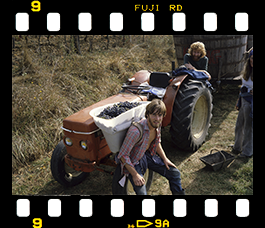 After my first year of college, in the summer of 1978, I hadn’t a clue what I wanted to study or do with my life so I set out with a friend from high school on a yearlong journey to discover Europe, North Africa and the Middle East. This the first story in a four part series that looks at the first few months hitchhiking around northern Europe and the six week we stayed at Chateau Brandeau in the south of France working on the vineyard and celebrating the grape harvest.
After my first year of college, in the summer of 1978, I hadn’t a clue what I wanted to study or do with my life so I set out with a friend from high school on a yearlong journey to discover Europe, North Africa and the Middle East. This the first story in a four part series that looks at the first few months hitchhiking around northern Europe and the six week we stayed at Chateau Brandeau in the south of France working on the vineyard and celebrating the grape harvest.
Road Trip Across Souther Europe (Part II)
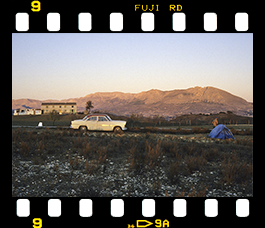 In the summer of 1978, I set out with my friend from high school on a yearlong journey to discover Europe, North Africa and the Middle East. In this the second part of a four part series that documents my Journey, my traveling partner Steve and I join forces with our high school friends Pilar and Cathy and purchase a car. From Chateau Brandeau, in the south west of France, we set out on a journey that takes us across southern Europe and eventually ends in Greece.
In the summer of 1978, I set out with my friend from high school on a yearlong journey to discover Europe, North Africa and the Middle East. In this the second part of a four part series that documents my Journey, my traveling partner Steve and I join forces with our high school friends Pilar and Cathy and purchase a car. From Chateau Brandeau, in the south west of France, we set out on a journey that takes us across southern Europe and eventually ends in Greece.
A Vagabond Journey Up The Nile (Part III)
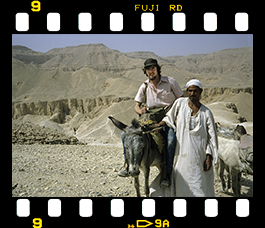 After traveling for six months with my high school friend, Steve Eccles, in northern and southern Europe, we decide to split up. I crossed the Mediterranean to Egypt traveling all the way up the Nile and using whatever transportation was available until I reached the temple of Abu Simbel. Then, I returned to Cairo just in time to witness Jimmy Carter and Anwar Sadat parading through the center of the city in an open limousine. Shortly after Carter’s visit, Egypt and Israel signed the Camp David Accords.
After traveling for six months with my high school friend, Steve Eccles, in northern and southern Europe, we decide to split up. I crossed the Mediterranean to Egypt traveling all the way up the Nile and using whatever transportation was available until I reached the temple of Abu Simbel. Then, I returned to Cairo just in time to witness Jimmy Carter and Anwar Sadat parading through the center of the city in an open limousine. Shortly after Carter’s visit, Egypt and Israel signed the Camp David Accords.
Following the Hippie Trail to Matala (Part IV)
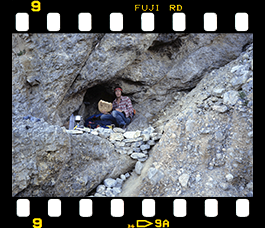 After traveling through Egypt for over a month, I returned to Athens where I took the ferryboat to Crete. My intention was to hike down the Samaria Gorge, a spectacular canyon that starts high in the island’s mountains making its way to the Mediterranean and then discover the lore behind the caves of Matala, a hippy haven in the 1960s and 70s.
After traveling through Egypt for over a month, I returned to Athens where I took the ferryboat to Crete. My intention was to hike down the Samaria Gorge, a spectacular canyon that starts high in the island’s mountains making its way to the Mediterranean and then discover the lore behind the caves of Matala, a hippy haven in the 1960s and 70s.
The Turkish Coastline, Istanbul and My Swiss Connection (Part) V
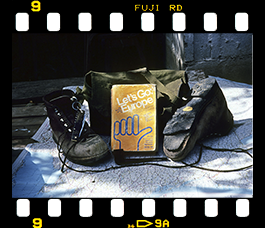 After following the Hippie Trail on the Greek Island of Crete I continue on to Turkey and journey along the coastline until I reach the tiny tourist town of Sidi. From there I cross back through the center of Turkey until I get to Istanbul. After running out of money in Istanbul I take a bus back up to Germany and then spend two months in Switzerland getting to know my father’s family and friends before returning back to the United States.
After following the Hippie Trail on the Greek Island of Crete I continue on to Turkey and journey along the coastline until I reach the tiny tourist town of Sidi. From there I cross back through the center of Turkey until I get to Istanbul. After running out of money in Istanbul I take a bus back up to Germany and then spend two months in Switzerland getting to know my father’s family and friends before returning back to the United States.
Rocking the Cradle and Other Pyramid Performances
 This past September marked the 40th anniversary of the Grateful Dead concert at the Giza Pyramids in Egypt. The three-day event climaxed with a performance under a full lunar eclipse. The group’s fanatic followers, the Dead Heads, converged on Egypt from all over the world to revel in a three-day musical fest in the shadow of the Sphinx. Even though I neither attended the concert, nor was I a fan, the group’s performance indirectly altered the course of my life. The concert also started a trend of performances at Egypt’s splendid archeological sites which I would document during my career as a photographer.
This past September marked the 40th anniversary of the Grateful Dead concert at the Giza Pyramids in Egypt. The three-day event climaxed with a performance under a full lunar eclipse. The group’s fanatic followers, the Dead Heads, converged on Egypt from all over the world to revel in a three-day musical fest in the shadow of the Sphinx. Even though I neither attended the concert, nor was I a fan, the group’s performance indirectly altered the course of my life. The concert also started a trend of performances at Egypt’s splendid archeological sites which I would document during my career as a photographer.
Remembering Gaddafi’s Unorthodox Legacy and His Night at the Museum
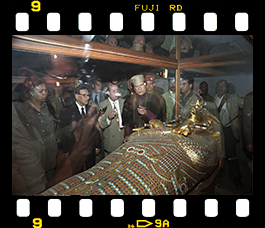 It has been nearly seven years since Libya’s former leader Muammar Gaddafi was executed after he was found hiding in a drainage ditch near his hometown of Sirte. Over the course of my career, I covered all Arab heads of state extensively, but few were as unpredictable and quirky as Gaddafi. One never knew what to expect when he rolled into town. His eccentricities included staying in a Bedouin tent instead of a guest palace when on a state visit to Cairo or making a nocturnal visit to the Egyptian Museum. In sum, there was never a dull moment when covering his visits.
It has been nearly seven years since Libya’s former leader Muammar Gaddafi was executed after he was found hiding in a drainage ditch near his hometown of Sirte. Over the course of my career, I covered all Arab heads of state extensively, but few were as unpredictable and quirky as Gaddafi. One never knew what to expect when he rolled into town. His eccentricities included staying in a Bedouin tent instead of a guest palace when on a state visit to Cairo or making a nocturnal visit to the Egyptian Museum. In sum, there was never a dull moment when covering his visits.
Remembering the Eritrea-Ethiopia War
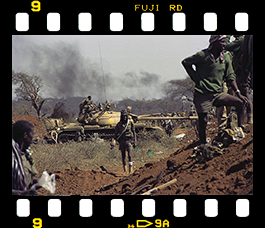 In March 1998 I covered the frontlines of the war between Eritrea and Ethiopia after the Battle of Tsorona from the Eritrean side. The 1998-2000 conflict, the result of a border dispute, was relatively short-lived but it claimed an estimated 75,000 lives. Although a U.N.-brokered ceasefire agreement was signed in the year 2000, the two parties refused to implement the terms of the treaty until early July 2018, when both counties finally agreed to forge a lasting peace and put the past behind.
In March 1998 I covered the frontlines of the war between Eritrea and Ethiopia after the Battle of Tsorona from the Eritrean side. The 1998-2000 conflict, the result of a border dispute, was relatively short-lived but it claimed an estimated 75,000 lives. Although a U.N.-brokered ceasefire agreement was signed in the year 2000, the two parties refused to implement the terms of the treaty until early July 2018, when both counties finally agreed to forge a lasting peace and put the past behind.
Ethiopia: Land of Many Legends and Dazzling Beauty
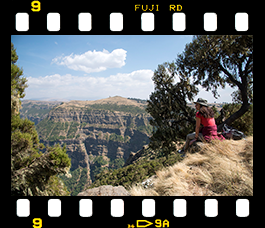 A journey through northern Ethiopia also known as the “roof of Africa.” For 11 days, we toured churches built by the Christian empires of the highlands, attended one of the most spectacular and extensive Epiphany celebrations in the world, and wandered in the royal complexes of the country’s legendary kings and queens, including the ruins of an ancient site allegedly dating back to the 11th century B.C. rule of the Queen of Sheba. Our journey also took us to one of the highest mountain chains in Africa where we admired the spectacular view and bonded with a handsome and friendly species of monkeys that call these mountains home.
A journey through northern Ethiopia also known as the “roof of Africa.” For 11 days, we toured churches built by the Christian empires of the highlands, attended one of the most spectacular and extensive Epiphany celebrations in the world, and wandered in the royal complexes of the country’s legendary kings and queens, including the ruins of an ancient site allegedly dating back to the 11th century B.C. rule of the Queen of Sheba. Our journey also took us to one of the highest mountain chains in Africa where we admired the spectacular view and bonded with a handsome and friendly species of monkeys that call these mountains home.
Dire Straits: On the Front Lines of the Tanker War
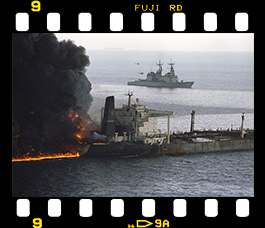 To commemorate the 30th anniversary of my coverage of the “Tanker War,” I have created an exhibition featuring the photos I took of this conflict. The Tanker War was a byproduct of the 8-year Iran Iraq war and was directed at attacking shipping in the Persian Gulf. The accompanying text, “Dire Straits: On the Front Lines of the Tanker War,” is divided into two parts and contextualizes the images from this forgotten war, which has been reduced to a footnote in comparison with more recent violence that has brought greater destruction and suffering to this ever troubled region.
To commemorate the 30th anniversary of my coverage of the “Tanker War,” I have created an exhibition featuring the photos I took of this conflict. The Tanker War was a byproduct of the 8-year Iran Iraq war and was directed at attacking shipping in the Persian Gulf. The accompanying text, “Dire Straits: On the Front Lines of the Tanker War,” is divided into two parts and contextualizes the images from this forgotten war, which has been reduced to a footnote in comparison with more recent violence that has brought greater destruction and suffering to this ever troubled region.
Rough and Tumble, Traveling by Motorcycle from Cairo to Port Sudan
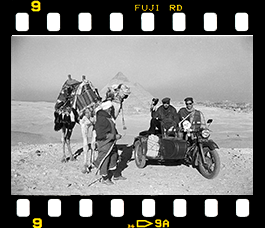 In late December 1986, I set out to retrace the first ever trans-Africa motorcycle trip with my fellow adventure and water polo teammate, Mark Ehlen. In 1932, Francis Flood and James C. Wilson rode two motorcycles with sidecars from what is now Lagos, Nigeria to the Eritrean port town of Masawa on the Red Sea. Our plan was to begin in Cairo and follow the Nile south all the way to Khartoum where we would turn west and backtrack over Flood and Wilson’s original route.
In late December 1986, I set out to retrace the first ever trans-Africa motorcycle trip with my fellow adventure and water polo teammate, Mark Ehlen. In 1932, Francis Flood and James C. Wilson rode two motorcycles with sidecars from what is now Lagos, Nigeria to the Eritrean port town of Masawa on the Red Sea. Our plan was to begin in Cairo and follow the Nile south all the way to Khartoum where we would turn west and backtrack over Flood and Wilson’s original route.
Princess Diana’s Egypt Tour
 On this the 20th anniversary of Princess Diana’s death and the 25th anniversary of her visit to Egypt I have created an exhibition from my personal archive showcasing her tour as well as a little insight into what it was like being part in her entourage for five days.
On this the 20th anniversary of Princess Diana’s death and the 25th anniversary of her visit to Egypt I have created an exhibition from my personal archive showcasing her tour as well as a little insight into what it was like being part in her entourage for five days.
